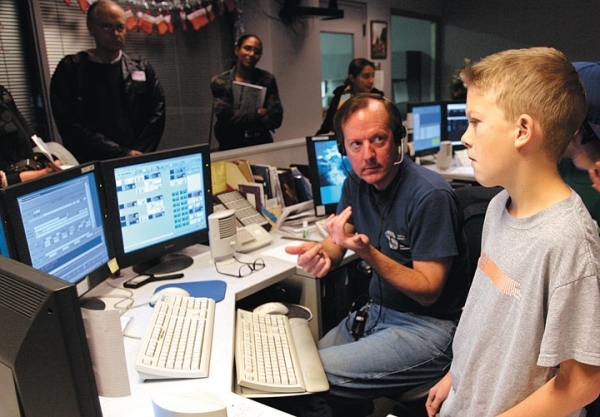While other Peninsula cities are preparing to merge or outsource their public-safety departments, Mountain View, Palo Alto and Los Altos are pursuing a less drastic idea -- a "virtual consolidation" of their emergency operations.
The three cities have been working for the past three years on upgrades that would allow each department to effortlessly communicate with the others and provide backup service as needed. The project would also boost the cities' ability to respond to incidents along their respective borders and provide redundancies for each dispatch system -- a useful measure in the event one of the dispatch systems becomes inoperable, said Charles Cullen, director of technical services at the Palo Alto Police Department.
Cullen, who updated the Palo Alto City Council on the effort Monday night, called virtual consolidation "an important and groundbreaking project" that will allow the cities to leverage the benefits of consolidation without the "upfront cost of a brick-and-mortar facility." By pooling their resources, Cullen said, the three cities were able to bid together on a common dispatch system that they would not be able to afford on their own. Last year, they selected the company Intergraph Corporation to design and install the new system, Cullen said.
The upgrade will cost the three cities a little more than $3 million, with Mountain View and Palo Alto each contributing roughly $1.3 million and Los Altos (which has a smaller population and no fire department) chipping in $740,000. The mutual-aid channel would be partially funded by a grant from the State Homeland Security Grant Program.
For Palo Alto, the consolidation project is part of a greater push to save money by working with neighbors around the region. Palo Alto City Manager James Keene has been working with his counterparts in neighboring cities for more than a year to see which types of services they can share to save money and improve efficiency. As he unveiled his proposed budget for fiscal year 2012 on Monday night, he cited the "virtual consolidation" project as a harbinger of the future.
"We'll be doing much, much more of that, as I see it," Keene said. "We plan to expand our use of information technology to make us more efficient as an organization."
But while saving money is a major incentive, city officials also believe the project would improve response times for emergency-service calls, Cullen said. The three cities aim to adopt a common 9-1-1 system that would allow them to respond to text messages, email and videos -- a system branded "Next Generation 9-1-1." It would also allow each city to monitor calls just across its border and respond accordingly.
"There may be resources that are closer to south Palo Alto in Mountain View and Los Altos than our units up north and we think we can reduce response times and serve the public better," Cullen said.
Cullen said the cities hope to sign a contract for the joint public-safety systems in the next month and to begin installing and testing the new system later this year. The joint systems are scheduled to go live in spring 2012, he said.
The project is nearing completion at a time when other cities in the region are planning more dramatic measures for reducing public-safety costs. San Bruno and Millbrae agreed last month to merge their fire departments. San Carlos, which had previously shared a fire department with Belmont, had flirted with outsourcing its fire department before deciding last week to merge it with Redwood City's.
Palo Alto officials praised the virtual consolidation effort Monday night, calling it a smart way to reduce money and improve service. Councilman Greg Schmid said it was an "exciting project." Councilwoman Nancy Shepherd called it "great," and Mayor Sid Espinosa, a leading proponent of regionalizing services, dubbed it a "no-brainer."
"It will provide economies of scale," Espinosa said. "This was an area where there was a clear opportunity. There was a win-win for all the different communities."
Related stories:



Comments
Old Mountain View
on May 3, 2011 at 11:10 am
on May 3, 2011 at 11:10 am
What other areas MV and PA are merging biz?
Shoreline West
on May 3, 2011 at 2:27 pm
on May 3, 2011 at 2:27 pm
I would like to see a cost benefit analysis published.
How much money does the new efficient system save?
What is so bad about the current system?
Looks more like a pet project of somebody’s who persuaded others to find something to do to make themselves feel important, with the tax payer’s money of course.
Other Peoples Money
Castro City
on May 3, 2011 at 3:13 pm
on May 3, 2011 at 3:13 pm
So was this story spoon fed to the Voice or was there a report on hand to actually ask questions(and failed)? We found out how much it costs (~3M dollars) but no mention at all of the savings. From the way this story was written its impossible to tell. Were there no projected costs savings over the current system???? I have a feeling this is fuzzy logic: A new brick and mortar facility would cost say, $6M, so by spending 3 Million they think they saved money? No, they spend $3M. Saving money would mean staying w/ the current system.
Reminds me of when my wife claims to have saved 100 dollars by spending 200 dollar sweater on sale. The real way to save is not to spend.